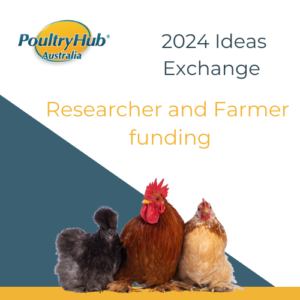As many readers will be aware, Australia is currently dealing with three parallel outbreaks of high pathogenicity avian influenza (HPAI). Two in regional Victoria, and one within the greater Sydney basin, to date 10 farms have been identified as being infected with one of three separate strains. These outbreaks are the tenth in Australia since 1976, with the most recent occurring in Victoria in 2020 and 2013 in Young, NSW, thankfully, each previous outbreak was successfully contained and eradicated.
In late May 2024, the first detection of the H7N3 strain of HPAI was detected on a farm in the Golden Plains Shire, Victoria, subsequent testing and tracing activities later identified a separate H7N9 strain on a poultry farm in the Shire of Corangamite. On the 19th of June, it was confirmed that a third strain (H7N8) was found on a poultry farm in the Greater Sydney Area and is not believed to be connected with the Victorian outbreaks. Importantly, none of the outbreaks are of the H5N1 strain that is causing concerns around the world due to its increased ability to infect mammal species including humans.
Symptoms associated with birds infected with avian influenza can include:
- sudden death
- respiratory signs (noisy or rapid breathing, coughing, sneezing, increased nasal secretions)
- conjunctivitis
- swelling of the head
- purple discolouration of the comb and wattles
- rapid decrease in feed and water intake
- decreased egg production
- ruffled feathers
- depression
- closed eyes
- diarrhoea
- nervous signs (twisted neck, inability to stay upright, inability to fly, uncoordinated movement, walking or swimming in circles, partial or full paralysis
All bird owners are being asked to remain vigilant for any signs of avian influenza in their flocks and pets, and should be aware that HPAI is a notifiable disease in both states. If you know or suspect the presence of HPAI in any birds you must notify your relevant state body as soon as possible.
The most likely vector for the spread of these HPAI strains is through wild birds, as has been highlighted by the three separate outbreaks across Australia as well as the discovery of HPAI in wild birds in Antarctica in April 2024. Sometimes the virus spills over from wild birds into domestic bird populations and may cause disease. This can occur through either direct contact between wild and domestic birds, or indirectly through contamination by wild birds of feed or water of domestic birds. As such, in order to minimise the potential spread, biosecurity and quarantine zones have been established in both states with requirement for all poultry and bird owners within the zones, including backyard poultry and pet avian species owners.
NEW SOUTH WALES
A Biosecurity (Avian Influenza) Emergency Order has been declared and the full details of which can be found here.
ACT
A quarantine Order has been declared and the full details of which can be found here.
VICTORIA
A Control Order has been put in place, full details of which can be found on the Agriculture Victoria website.
Australian Government Outbreak
NSW Department of Primary Industries
Trent McIntyre, PHA Business and Research Advisor




